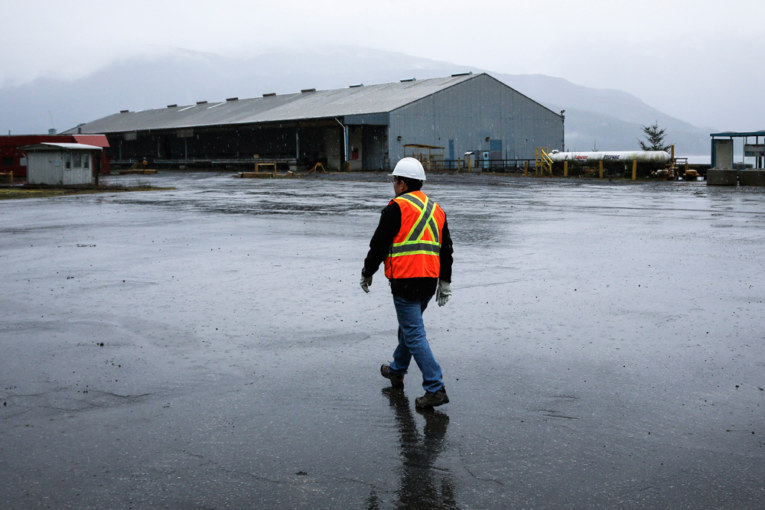
CALGARY – In a few short weeks, Woodfibre LNG is poised to become the second liquefied natural gas export project to break ground on Canada’s West Coast even as other advanced Canadian LNG proposals have been delayed yet again.
Woodfibre LNG, a subsidiary of Singapore-based Pacific Oil and Gas Ltd., is finalizing its engineering, procurement and construction contract, which company president David Keane expects to sign “at the end of the summer or shortly thereafter” before construction begins on the LNG export facility in Squamish, British Columbia.
“Our senior management, our chairman (Sukanto Tanoto), has been actively involved and once we sign our EPC contract then the next phase is moving into active construction,” Keane told the Financial Post. “Before we can proceed, we have to sign the contract, so we are hoping to have a final investment decision at the end of the summer or shortly thereafter.”
There are no other obstacles impeding the project, he said, as the company finalized its impact-benefits agreement with the Squamish First Nation, received its permits from the B.C. Oil and Gas Commission and permissions from the federal government to avoid punitive steel tariffs earlier this year.
Keane said the contract negotiations are largely focused on details right now and he remains confident the company will sign the contract in the coming weeks.
If all proceeds as planned, the $1.6-billion Woodfibre LNG project will follow in the footsteps of the Shell Canada Ltd.-led LNG Canada project near Kitimat, B.C. and begin construction, making it just the second such Canadian project of a list that at one point numbered 20 project proposals to take that step.
Woodfibre and its parent company have been quietly aligning all the pieces necessary to proceed with the project in recent months. Keane said the company has been negotiating with China National Offshore Oil Corp. (CNOOC) and an unnamed Japanese utility company for offtake agreements for the remaining two-thirds of the project’s LNG production.
Woodfibre is designed to export 2.1 million tonnes of LNG per year, which would make it a smaller scale project compared with LNG Canada, which will have an export capacity of 14 million tonnes per year when completed.
In May, Pacific Oil and Gas bought upstream natural gas producer Canbriam Energy Inc. for an undisclosed sum. Canbriam produces roughly 200 million cubic feet of natural gas per day and 6,000 barrels per day of associated gas liquids.
Like all natural gas producers in Canada, Canbriam has struggled in the face of low commodity prices to the point where Suncor Energy Inc., which previously owned a minority stake, wrote its investment “down to nil” last year.
The acquisition of Canbriam and coming FID on Woodfibre then, could provide a morale boost to the upstream natural gas industry in Canada, which has been suffering through persistently low prices this year and led to stock prices at many gas producers falling to all-time-lows. The upstream price of natural gas in Alberta averaged just 41 cents per thousand cubic feet at the end of last week, compared with a Henry Hub benchmark price in Louisiana of US$2.19 per mcf.
“I think it’s important psychologically for the industry and for Canada. We’ve always said that an LNG industry in British Columbia would be beneficial for all Canadians from the East Coast to the West Coast,” Keane said.
The construction of Woodfibre LNG is a small but important step for the natural gas industry as it demonstrates the B.C. government remains supportive of the nascent LNG export industry in the province, Raymond James analyst Jeremy McCrea said.
Other LNG export projects have faced delays, which have also weighed on sentiment in the gas sector.
David Keane, president, Woodfibre LNG
In July, Pieridae Energy Ltd. announced it was delaying a final investment decision on its $10 billion Goldboro LNG project in Nova Scotia until 2020 after it switched EPC contractors and as it was continuing to look for bridge financing for the project.
“It’s been a challenge in this market to raise funds. We feel we have a shovel ready project,” Pieridae spokesperson James Millar said.
“Our lone remaining hurdle is raising the bridge financing,” he said, adding the company had loan guarantees in place from the German government and is fully permitted.
Global debt and equity markets have been particularly challenging for mid-sized Canadian energy companies in recent years, and the lack of capital available for the oil and gas sector has hampered projects like Goldboro. “It’s a shame,” Millar said.
Similarly, Calgary-based Pembina Pipeline Corp. had hoped to make a final investment decision on its $8-billion Jordan Cove LNG project in Oregon this year but that has been delayed as the U.S. Federal Energy Regulatory Commission won’t be issuing permits for the facility until Jan. 2020.
“I think people are looking for diversification away from the Gulf Coast for a variety of reasons and I think Jordan Cove provides that diversification, where you have the ability to be attached to a Western Canadian Sedimentary Basin with challenged feedstock pricing,” Pembina senior vice-president and chief operating officer Jaret Sprott said on the company’s earnings call this month.
• Email: [email protected] | Twitter: geoffreymorgan
You can read more of the news on source
